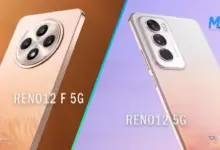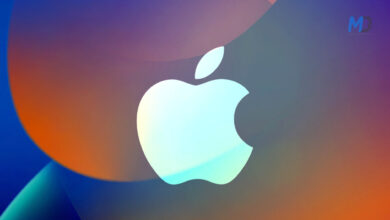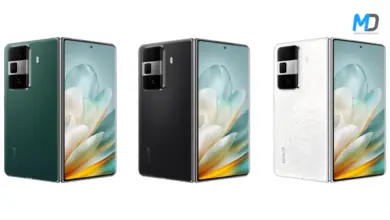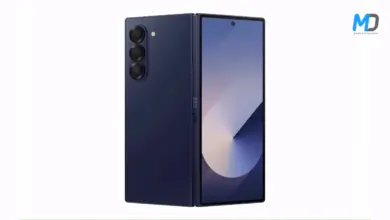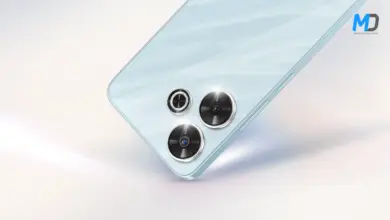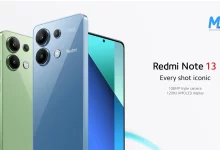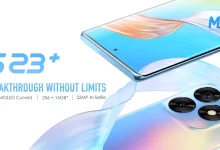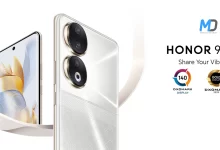Xiaomi Redmi K50i review has been released with key Features

Xiaomi Redmi K50i review has been released with key features. In 2019, Xiaomi’s Redmi brand released the Redmi K20 and K20 Pro in India, quickly becoming best-sellers. After a three-year delay, the Redmi K50i, a smartphone in the company’s K series, was released in India.
Even so, the Redmi K50i is hardly a brand-new smartphone. It’s the Poco X4 GT. However, it can be purchased outside of India. You can read our in-depth review of the Poco X4 GT right here, but before you do, we should point out that the Redmi K50i isn’t just a rebranded Poco X4 GT. Find out what sets them apart from one another below.
Xiaomi Redmi K50i review, unboxing
First, let’s look at the Redmi K50i’s packaging. The Redmi K50i is packaged in a white box with a few smartphone characteristics listed on one of the sides of the lid, in contrast to the Poco X4 GT’s black box with yellow letters. The contents of the box remain unchanged. The package includes a SIM ejection tool, a protective case, and standard documentation. A 67W charger and a USB-C cable are included.
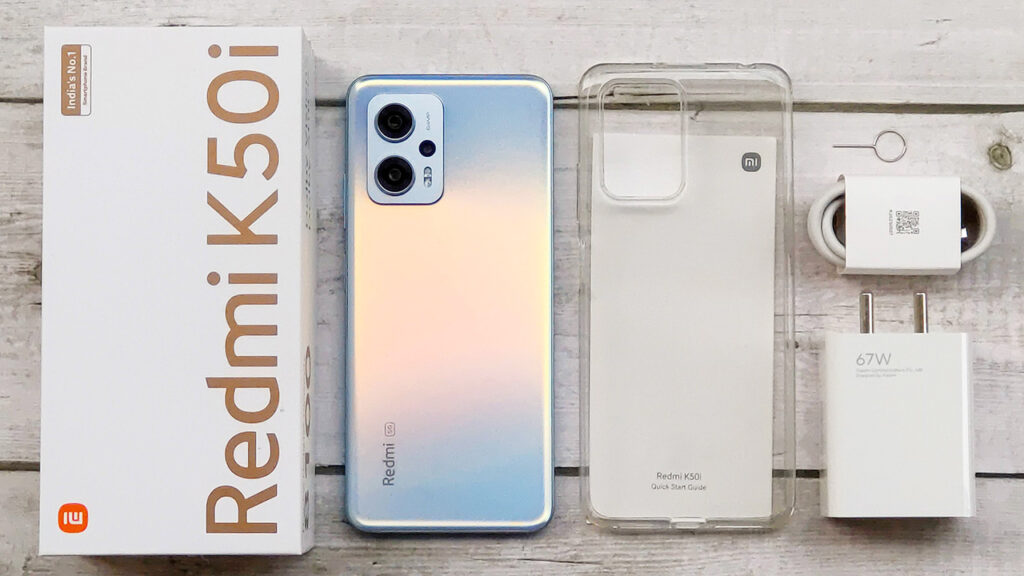
Design of Xiaomi Redmi k50i smartphone
The heart of the Redmi K50i is a Gorilla Glass 5–protected 6.6-inch FullHD+ Field Fringe Switching (FFS) LCD (the X4 GT has an In-Plane Switching (IPS) LCD). The display’s 7-stage adaptive refresh rate clocks in at 144Hz, and the touch sampling rate is 270Hz, both of which are impossible at a refresh rate of 90Hz or higher. The screen also supports HDR10+ and Dolby Vision.
The Redmi K50i lacks a pop-up selfie camera seen on the Redmi K20 and K20 Pro. It has a 16-megapixel front-facing camera housed in a circular cutout in the middle of the screen. To the rear of the Redmi K50i is a polycarbonate panel with the company’s logo and a rectangular camera island. The plastic rear cover lacks the upscale sensation of a glass back in the palm.
The panel, however, has a matte surface that makes up for it. It performed a great job of keeping the phone free of fingerprint smudges, but it also made it somewhat slippery. The Redmi K50i Phantom Blue model is particularly attractive because of its faint glittering design and color shifts in various lighting conditions. Backlit by three cameras and an LED light, the island on the back of the phone has a matte surface. It protrudes somewhat, and adding two cameras further increases the smartphone’s height, making it unstable when placed flat.

The volume rocker and power button are on the right side of the Redmi K50i’s flat frame. While plasticky, the response is quite good. We tried out the fingerprint scanner that works as part of the power button and found it quick and reliable. It also allows you to take screenshots, activate the stock camera app, or access the settings menu with a double press. The USB Type-C connector, speaker grille, and dual-SIM card slot of the Redmi K50i can all be found in the device’s base. There’s a second speaker, a 3.5mm connector for headphones, and an infrared transmitter.
Display of Xiaomi Redmi K50i
The maximum luminance of the 6.6-inch LCD of the Redmi K50i is 650 nits. DC Dimming is included, as well as compatibility for HDR10, HDR10+, and HLG. It’s also Widevine L1 certified, so you can watch videos in ultra-high definition (UHD) on OTT applications that support UHD. Dolby Atmos and Dolby Vision are included for an enhanced multimedia experience.
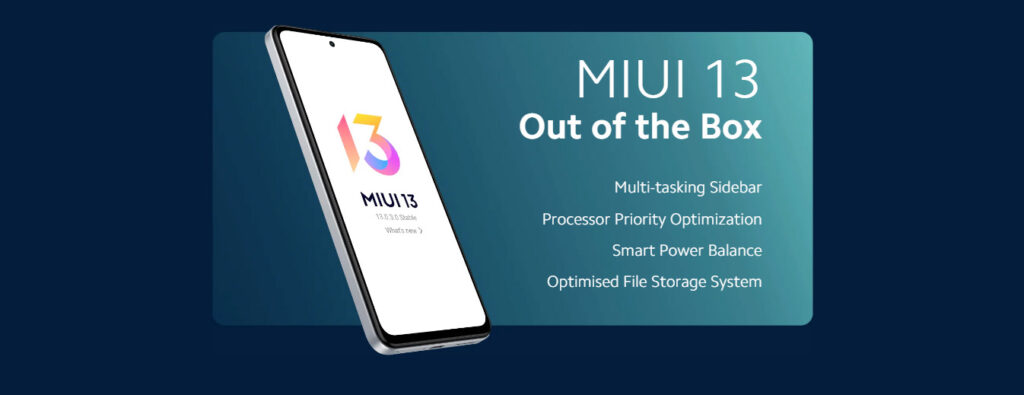
The latter can’t be found on any Xiaomi phone, not even the more costly 12T with its Dimensity 8100-Ultra processor. The haptic feedback on the Redmi K50i’s display is quite satisfying. It has versatile colors that change according to the lighting and is bright enough to see text outside. However, the fast refresh rate implementation really stood out to us on the Redmi K50i’s display.
The K50i offers seven different refresh rates, including 30Hz, 48Hz, 50Hz, 60Hz, 90Hz, 120Hz, and 144Hz, all of which can be selected from the custom refresh rate menu. These adapt dynamically to the context and preferences you’ve specified. The default option for most system menus and applications is a refresh rate of 120Hz, whether you’re engaging with the screen or not.
YouTube (at 60Hz) and Google Photos (at 30Hz) are the exceptions (90Hz). In the 60Hz mode, as predicted, the refresh rate was restricted to 60Hz across the board, while in the 90Hz mode, the refresh rate was reduced from 120Hz to 90Hz (except for Google Photos, where it remained locked at 60Hz). The 144Hz mode, however, brings forth several modifications.
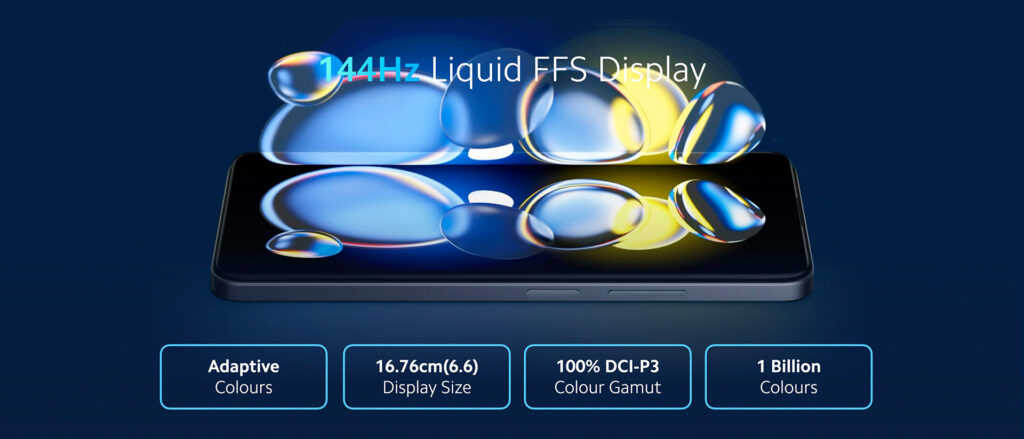
Even Google Photos updated at 144Hz, and although YouTube is still limited to 60Hz, in full-screen mode, it matched the refresh rate of films recorded at a lower FPS. In full-screen mode, some films ran at 30Hz, 48Hz, or 50Hz; when you interacted with the display, however, the frame rate jumped to 60Hz.
Software and Performances
A Dimensity 8100 SoC powers the Redmi K50i, and it has a Mali-G610 MC6 GPU for use in games and video editors that need demanding graphics processing. There are two storage configurations available for this smartphone: 6GB/128GB and 8GB/256 GB. The latter is what we are given; whatever option you choose, you’ll have access to LPDDR5 memory and UFS 3.1 storage.
The Redmi K50i now runs MIUI 13.0.7 with the October 2022 security patch, which is not ideal given that December is nearly done and there is still a long way to go until the next patch released (Android 12-based MIUI 13.0.2 Global with the June 2022 Android security patch). A few unwelcome third-party applications may lurk on your smartphone, but thankfully, you can remove them.
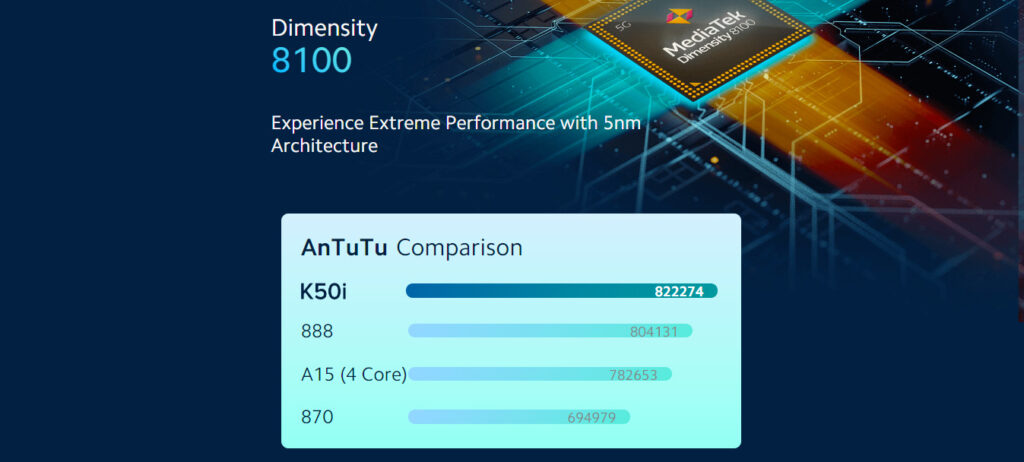
The Redmi K50i offers a software experience consistent with previous Redmi smartphones running Android 12 and MIUI 13. When it came to commonplace tasks like web surfing, app switching, and playing games, the Redmi K50i delivered with lightning speed and smoothness. Almost no stuttering occurred. Even after more than an hour of continuous gaming, the smartphone only became moderately hot.
Camera and Battery Performances
The Redmi K50i has four cameras: a 16-megapixel front-facing camera, a 64-megapixel main camera, an 8-megapixel ultrawide camera, and a 2-megapixel macro camera. Selfies are captured via a camera with an f/2.5 aperture and a maximum resolution of 1080p at 30 frames per second. However, the main 64MP camera has an aperture of f/1.9 and can capture video at high to 60 frames per second in 1080p resolution and 30 frames per second in 4K resolution.
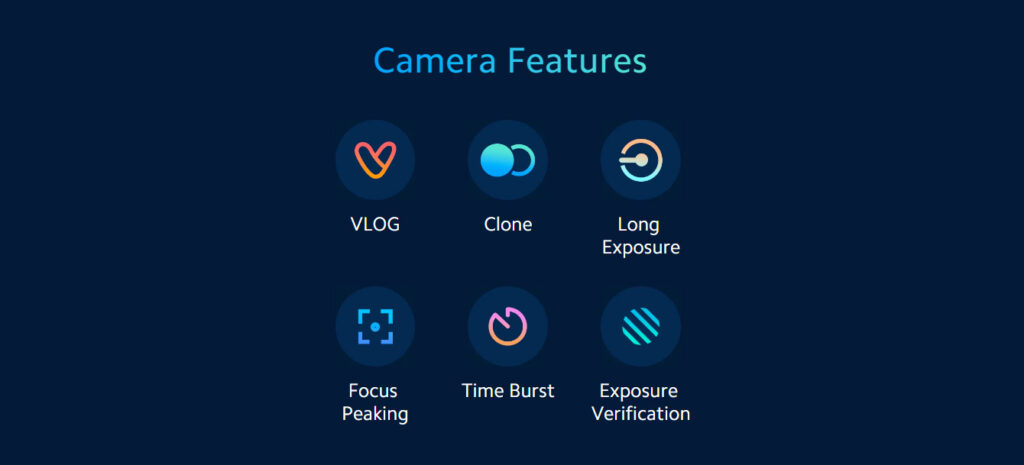
The macro camera has an aperture of f/2.4, while the 8MP ultrawide device has a FOV of 120 degrees. The Redmi K50i shares its camera technology with the Poco X4 GT; our testing of the Poco X4 GT’s camera may give you a sense of the quality you can anticipate from the Redmi K50i’s camera. Like the Poco X4 GT, the Redmi K50i has a 5,080 mAh battery and can be charged through the included 67W wired charger.
Although we were unable to perform our usual battery tests on the Redmi K50i, we found that with mixed usage (including web browsing, social media apps, streaming 1080p YouTube videos, and gaming), we were able to get at least 6-6.5 hours of screen-on time on a single charge while using Wi-Fi at 144Hz. When the Redmi K50i’s battery dies, you can use the included 67W charger to get it back up to full strength in as little as 15 minutes.
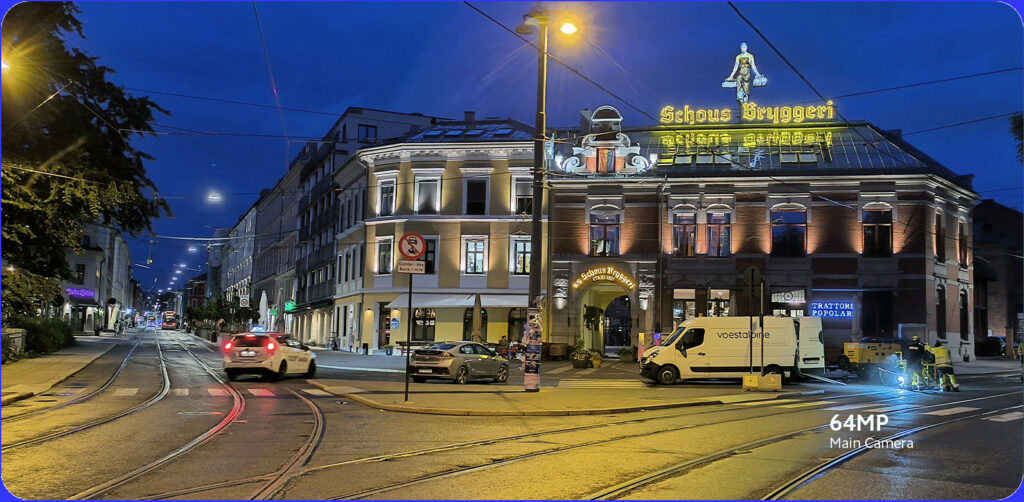
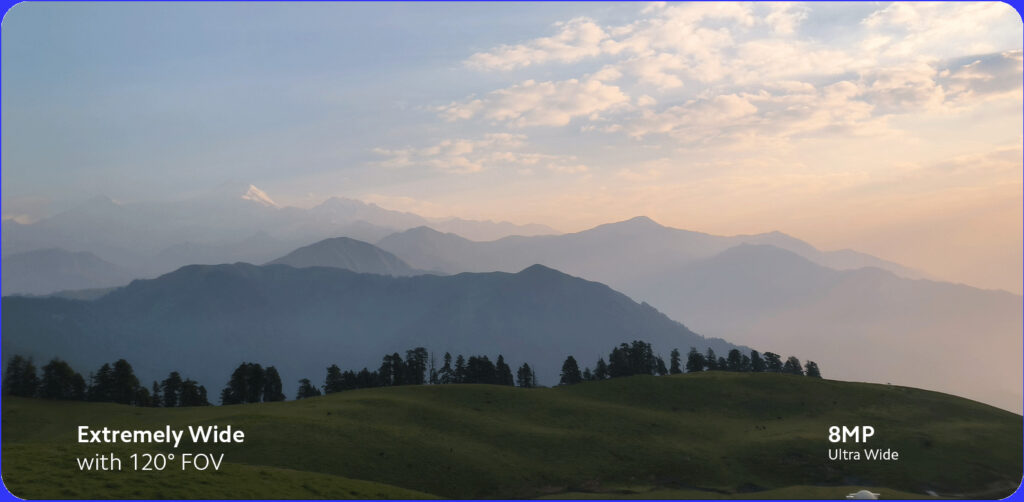

A full charge takes around 46 minutes. Our tests showed that the Redmi K50i’s battery went from dead to 35% charged in 15 minutes, 50% charged in 22 minutes, 64% charged in 30 minutes, and 100% charged in 53 minutes. The Poco X4 GT had a higher percentage charge after 30 minutes (64% vs. 75%), but it took longer to reach 100% (57 minutes vs. 53 minutes) due to its far more severe throttling.
Conclusion
Three colors are available for the Redmi K50i: Stealth Black, Quick Silver, and Phantom Blue. Prices have dropped by INR2,000 ($24/€22) from its debut price, bringing the 6G/128GB model to INR23,999 ($290/€272) and the 8GB/256GB model to INR26,999 ($326/€306). You get a lot of bang for your buck with this phone because of its speedy processing, long battery life, and lightning-fast charging.
Photos taken throughout the day are also rather good using the cameras. If you value durability above all else, you may want to seek elsewhere than the Redmi K50i, which has a plastic back and LCD. One possibility is the Xiaomi 11i HyperCharge or Redmi Note 11 Pro+ in markets outside India. Xiaomi 11i HyperCharge 6GB/128GB and 8GB/128GB models can purchase for INR24,999 ($302/€283) and INR26,999 ($326/€306), respectively.
It has a 108MP main camera, 120W capability for cable charging, an IP53 certification, and an AMOLED display. The 11i HyperCharge’s 4,500 mAh battery and 6nm Dimensity 920 processor mean it has less battery life than the Redmi K50i. Read our in-depth review of the Xiaomi 11i HyperCharge to find out more.



